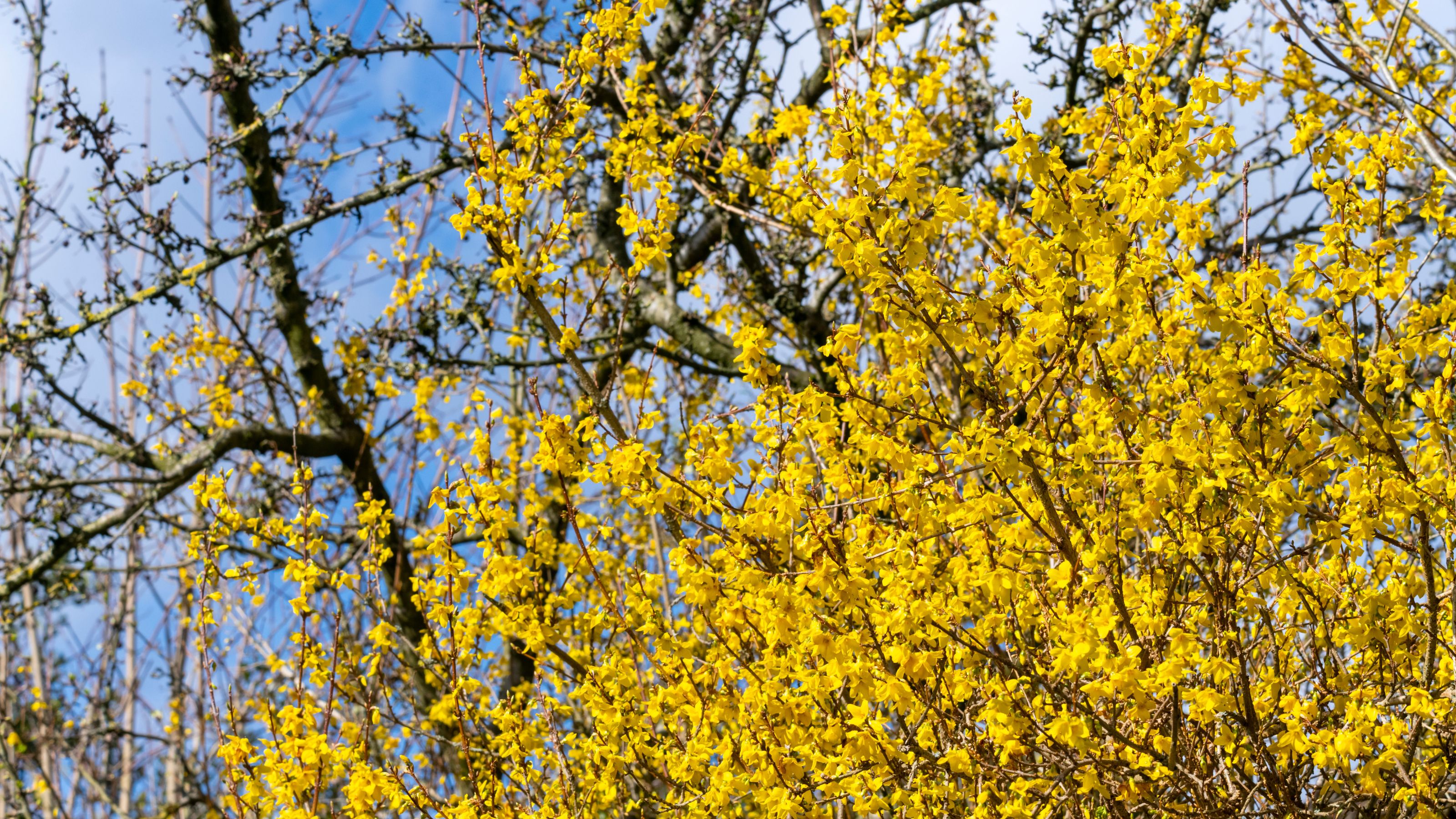How to prune forsythia – the all-important task to tackle to guarantee spring flowering
It's the key to vibrant blooms

Kayleigh Dray
Forsythia is one of the brightest shrubs you'll find in the garden, producing vibrant yellow flowers every spring. Learning how to prune forsythia properly is key to flourishing displays every year, though.
It's one of the best shrubs for full sun spots for a reason: forsythia loves the sunshine, and that's reflected in its cheerful yellow blooms. Once you've figured out when to prune forsythia, you can start learning exactly how to do it.
To help you out, we've put together a step-by-step guide on how to prune forsythia. But first, you'll need a few gardening tools in your arsenal...
What you'll need
First and foremost, you'll need to make sure any pruning equipment you use is sharp and sterile. Learning how to clean garden tools is essential if you want to avoid spreading diseases between plants.
Here's what you'll need to prune forsythia:
- A good pair of secateurs like the Kimura® 8" Pro Bypass Garden Secateurs from Amazon to work on smaller stems with ease
- A pruning saw like the VonHaus Pruning Saw from Amazon for larger branches
- A pair of long-reach loppers like the Spear & Jackson Razorsharp Telescopic Pruner from Argos for those hard-to-reach areas
- A sturdy pair of gardening gloves like the NickyPicky Gardening Gloves from Amazon to protect yourself from cuts and scratches
- A bag or trug like the Tuff Tub from The Range for cuttings
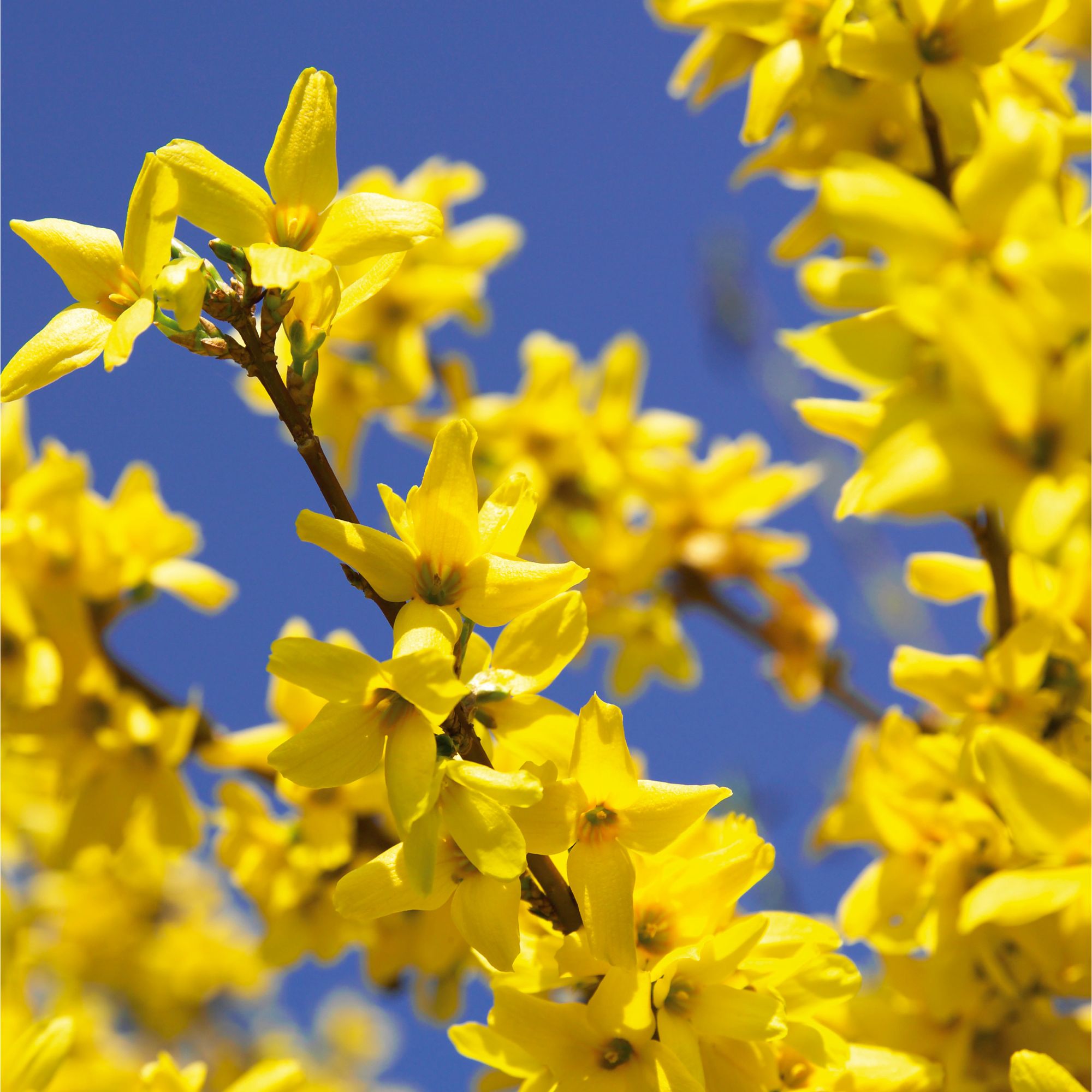
Step-by-step
Before you learn how to prune forsythia, consider the age of your shrub. Make sure that you're only pruning an established plant, as younger plants need time to develop naturally. Just remove any dead, damaged or odd shoots come springtime and leave them be!
If your forsythia is well-established, this guide is for you. Let's dive in...
Sign up to our newsletter for style inspiration, real homes, project and garden advice and shopping know-how
1. Start with the three Ds
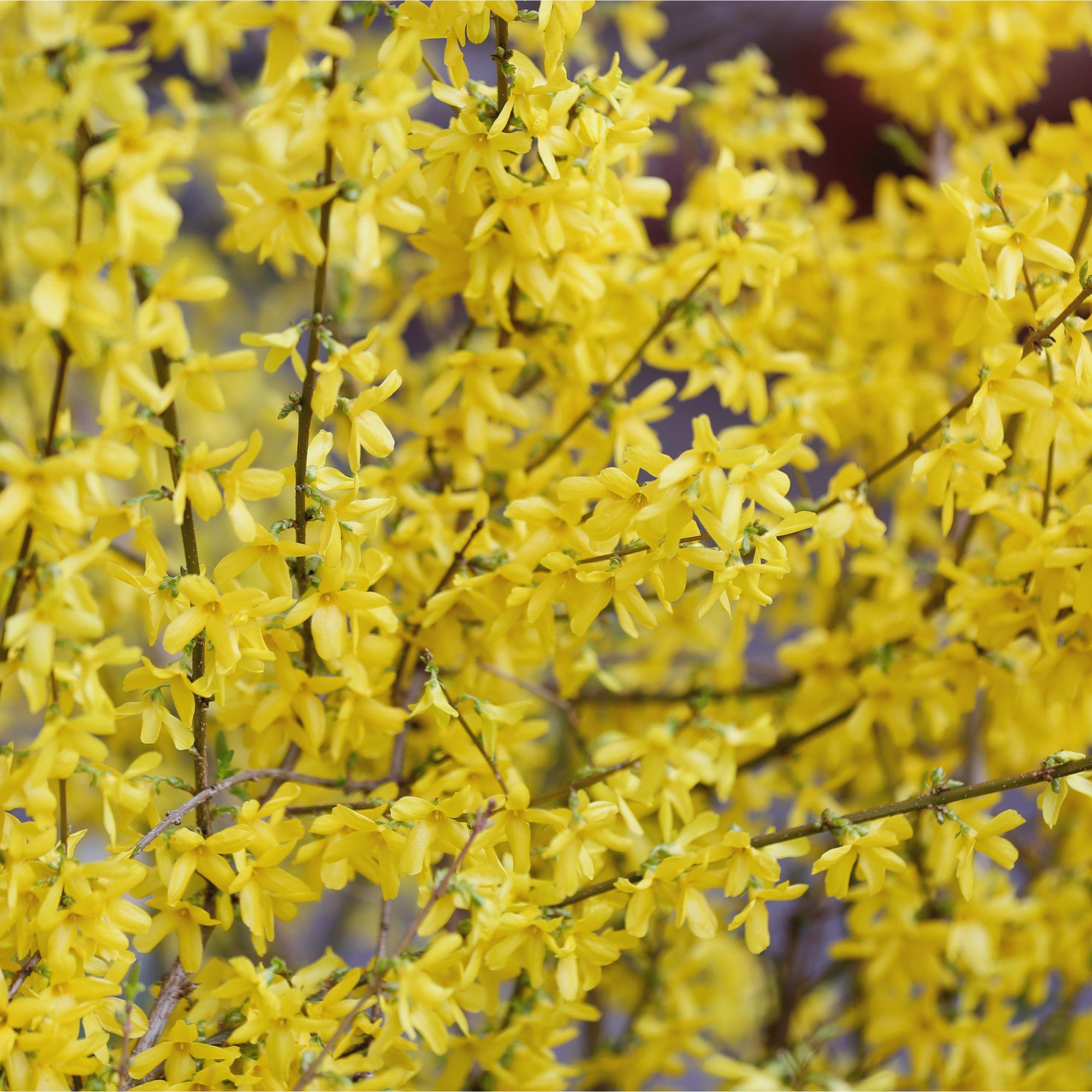
You might already be aware of the 'three Ds' pruning rule, especially if you've been reading about the plants to prune in November, and it's a key step in pruning forsythias, too.
In a nutshell, the three Ds stand for dead, damaged and diseased growth, all of which should be removed as part of the pruning process.
2. Cut it back
Then, you can begin cutting the shrub right back, targeting old, woody growth.
'Remove approximately 20 percent of the remaining and oldest, woodiest stems right down to the ground if possible,' advises Heather Birkett, garden and outdoors manager at the National Trust's Acorn Bank in Cumbria.
'Forsythia is usually multistemmed, but if the shrub has a single main ‘trunk’ then remove 20 percent of older stems back to the trunk.'
Removing that much of the plant might seem scary, but you're actually making room for a fresh wave of growth in the spring and a range of other benefits.
'Cutting forsythia right back opens up the shrub, reducing congestion and encourages new growth to develop from as low a point as possible,' explains Heather.
'Removing about one-fifth of the stems at the base of the shrub will help maintain a healthy, vigorous plant by encouraging air circulation and sunlight penetration and reducing the risk of disease,' adds Christopher O'Donoghue from Gardens Revived.
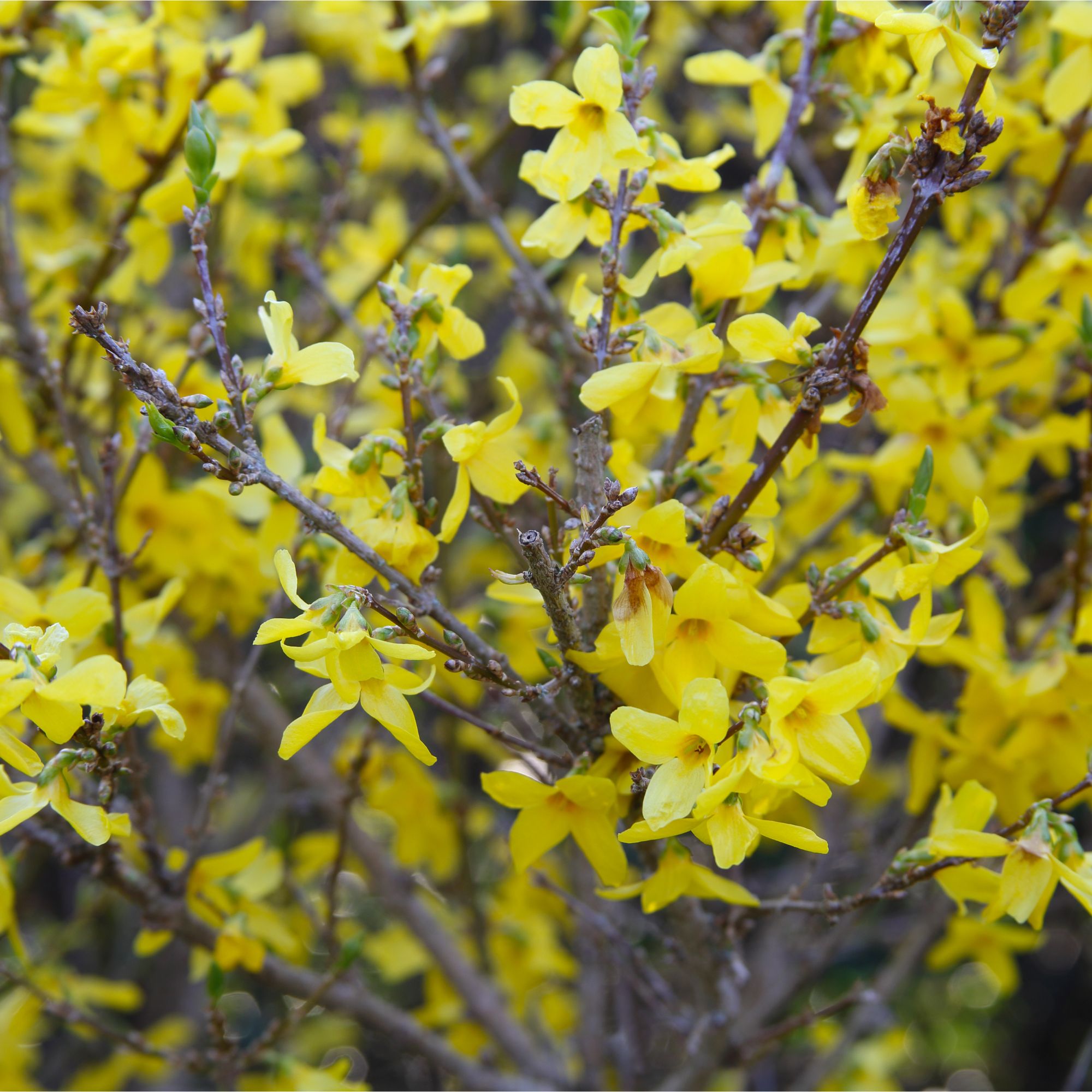
As for shoots that have just finished flowering, make sure you're cutting those back to upward- or outward-facing buds.
'Proper pruning cuts made just above healthy buds or stems also speed healing and lower disease susceptibility,' says Steven Bell, gardening enthusiast and CEO of Paving Shopper. 'Just try to resist the impulse to overprune, and let the plant itself guide you to determine which branches are best removed.'
3. Remove weak growth
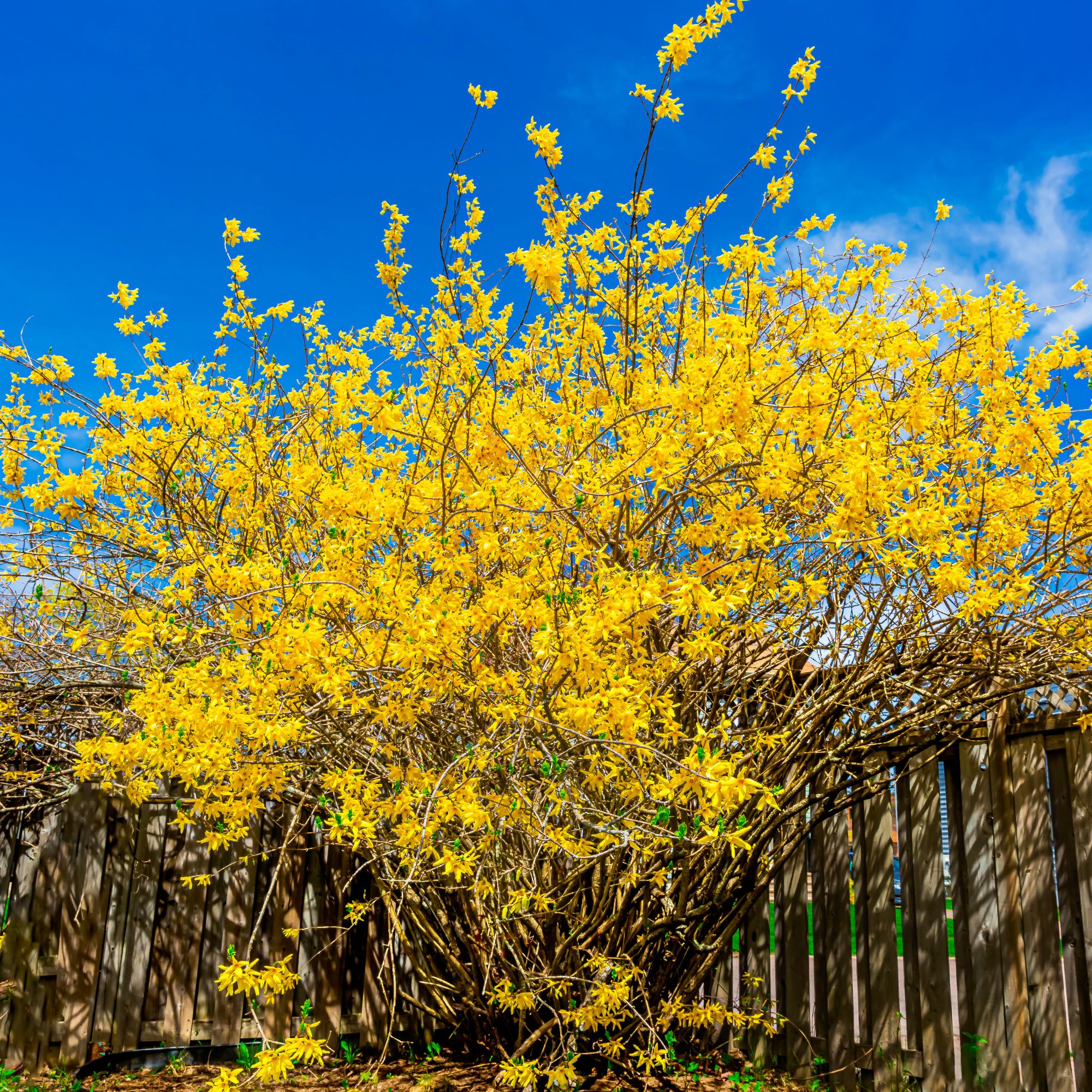
Finally, you'll need to remove any weak, spindly growth.
'This helps the plant focus its energy on creating strong new growth for next year’s flowers,' explains Heather.
Learning how to sharpen secateurs and other pruning tools properly will enable you to make the cleanest cuts.
Just don't go too heavy on new growth. 'You'll want to avoid any aggressive hacking or drastic reshaping that could send these early-blooming shrubs into shock,' says Steven. 'Instead, I favour more moderate, selective thinning that respects the plant's natural form.'
FAQs
How do you prune an old overgrown forsythia?
If you've left your forsythia to its own devices and it's looking a little overgrown, winter is the perfect time to start renovating it.
'Take the whole structure right down to the ground,' explains Heather from the National Trust's Acorn Bank. 'It won't flower in the spring, but will create strong new growth to flower the following spring.'
How do you shape forsythia?
Following the above steps will help keep your forsythia in shape: removing dead, diseased and weak growth, and then cutting a fifth of the old, woody stems back to the base should encourage a neat habit every year.
If you want to take it a step further and trim back shoots that have just finished following, ensure you're making clean cuts above healthy upward- or outward-facing buds.
Now you know how to prune forsythia! Fresh spring displays await...

Sophie joined the Ideal Home team as Gardens Editor in June 2024. After studying English at Royal Holloway, University of London, she began writing for Grow Your Own, which spurred on her love of gardening. She's tried growing almost every vegetable under the sun, and has a soft spot for roses and dinnerplate dahlias.
As Gardens Editor, Sophie's always on the lookout for the latest garden trend. She loves sharing growing hacks for every space, from herbaceous borders to balconies.
- Kayleigh DrayActing Content Editor
